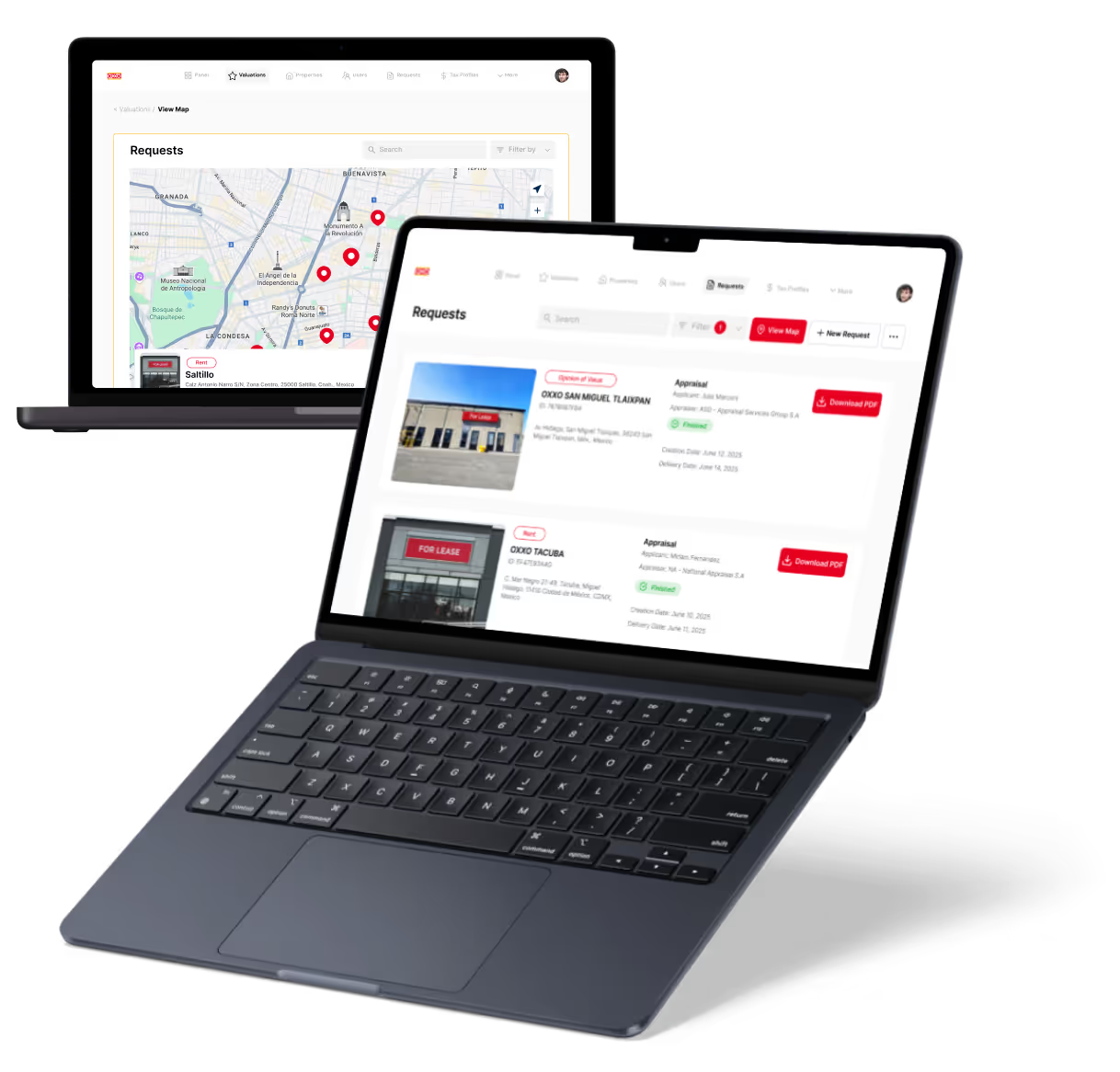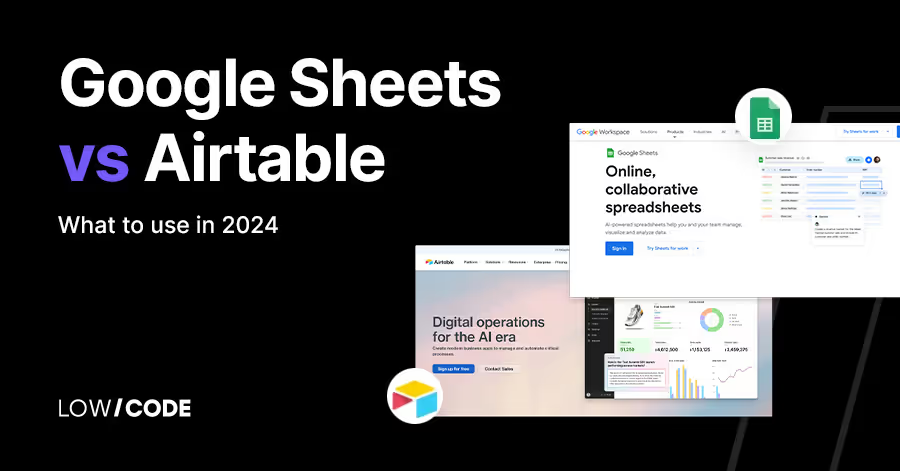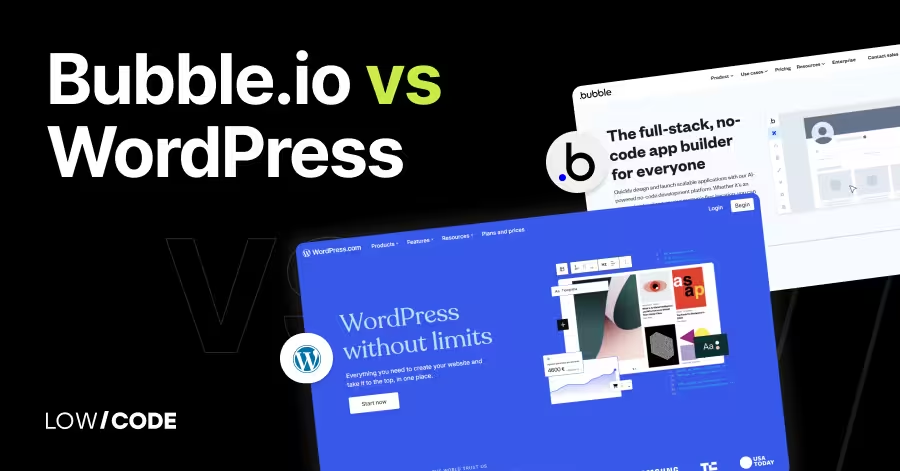Webflow vs Drupal | 13 Factors to Decide the Best One
19 min
read
Compare Webflow vs Drupal across 13 key factors like ease of use, design, CMS, SEO, and more to find the best platform for your next website

Choosing the right website builder can save weeks of work and thousands in development costs.
As of 2025, Webflow powers over 3.5 million websites, while Drupal is trusted by 1.7% of all websites with known CMS usage, including big names like NASA and Harvard. Webflow is loved by designers for its no-code visual editor, while Drupal is favored by developers for its power, flexibility, and security.
But which one fits your needs? This comparison breaks down the key differences—ease of use, design freedom, performance, security, and scalability—so you can choose the best tool for your business or team.
Quick Comparison Table - Webflow vs Drupal
1. What’s the core difference between Webflow vs Drupal?
The core difference between Webflow and Drupal is how they approach website building.
Webflow is a no-code visual builder made for designers, marketers, and small teams. You can build custom websites using drag-and-drop tools without writing code. It combines design, content management, and hosting in one platform. It's fast, user-friendly, and great for modern, responsive websites.
Drupal, on the other hand, is a powerful open-source CMS made for developers and large organizations. It requires coding knowledge to set up and manage. Drupal is built for complex sites with custom user roles, large databases, and detailed permissions.
So if you want a visual website builder that’s quick and simple to use, Webflow is the better choice. If you need a highly customizable and scalable system with developer support, Drupal offers more control and flexibility.
2. Ease of use and learning curve
Let’s begin by comparing how easy it is to use each platform for building websites.
Is Webflow beginner-friendly for non-developers?
Yes, Webflow is designed for non-developers. It uses a drag-and-drop interface that lets you build fully custom websites without writing code. You can control layouts, animations, and styles visually, similar to using design tools like Figma or Photoshop.
Webflow also includes built-in hosting, CMS, and SEO tools, making it easy to manage everything in one place. While the interface may take a few hours to learn, most users can build a full site without needing developer help. It’s perfect for designers, marketers, and small businesses.
Does Drupal require coding or developer experience?
Yes, Drupal is more complex and is built mainly for developers and technical teams. Setting up a Drupal site involves installing modules, writing PHP code, and configuring databases. Even basic changes often need developer input.
While there are themes and page builders available, most customizations require backend work. Drupal is very powerful, but the learning curve is steep. It’s better suited for companies with IT teams or developers who can manage and maintain a scalable website with many custom features and permissions.
3. Design flexibility and customization
Next, let’s look at how much design control each platform gives you.
How much design control does Webflow offer?
Webflow gives full design freedom. You can build pixel-perfect layouts using visual tools and control every detail—spacing, typography, animations, and responsive behavior. It doesn’t lock you into templates, so you can start from scratch or use a template and customize everything.
Webflow also supports CSS styling, interactions, and reusable components. You don’t need to write code, but advanced users can still add custom HTML, CSS, or JavaScript. It’s ideal for teams that want creative control without hiring developers.
Can you fully customize Drupal websites?
Yes, Drupal is highly customizable, but it requires technical skills. Developers can create custom themes, install third-party modules, or build new ones from scratch. Drupal offers full access to backend code, so you can control the look and functionality at every level.
It supports custom content types, layout builders, and role-based views. While you can achieve any design with Drupal, the process takes longer and needs developer time. It’s best for enterprise-level websites where complex features and complete customization are necessary.
4. CMS and content management features
Now let’s compare their strengths when it comes to managing content.
What kind of CMS tools does Webflow provide?
Webflow has a built-in CMS that lets you create custom content types like blog posts, products, or team members. You can design how each item looks and easily update content without touching the layout. Webflow’s CMS is visual and simple to use.
It’s great for content creators and marketers who need to update sites without technical help. You can also set permissions for content editors and create dynamic pages with filters and categories. It’s best for small to medium content-driven sites.
How powerful is Drupal for content-heavy websites?
Drupal is built for large-scale content management. It supports custom content types, taxonomies, user roles, and workflows out of the box. Editors can create complex page structures, reuse content, and set publishing rules. Drupal is often used by universities, news sites, and government portals with hundreds of pages.
It also supports multilingual content and content staging. While it’s not as visual as Webflow, it offers advanced tools for structured, large, and permission-controlled content. It’s one of the best CMS platforms for content-heavy projects.
Read more about:
5. Performance and speed optimization
Let’s see how both platforms perform when it comes to speed and site optimization.
Is Webflow fast and optimized out of the box?
Yes, Webflow is very fast out of the box. It hosts sites on a global CDN (Content Delivery Network), which means pages load quickly no matter where users are. Webflow automatically optimizes images, minifies code, and includes SSL by default.
You don’t need to configure anything—performance is handled for you. It's built for fast delivery and low maintenance. For most small to mid-sized websites, Webflow provides excellent loading times without requiring extra plugins or technical setup.
How does Drupal handle performance and caching?
Drupal is powerful but requires configuration for top performance. It supports advanced caching systems like Varnish, Memcached, and CDN integrations, but these need to be set up manually. Developers can fine-tune page caching, asset compression, and server performance to meet the needs of large or complex sites.
If done correctly, Drupal can scale very well and serve millions of users. However, without proper setup and optimization, it can run slowly. It’s ideal for teams that have control over hosting and know how to manage performance tools.
6. SEO and marketing tools
Let’s compare how well both platforms support SEO and marketing features.
Does Webflow support modern SEO features?
Yes, Webflow is SEO-friendly out of the box. You can set custom page titles, meta descriptions, alt text, and clean URLs without any plugins. It also allows structured data, canonical tags, and 301 redirects. Webflow sites are fast-loading and responsive, which helps SEO rankings.
Built-in tools like XML sitemaps and Open Graph tags also support content sharing and indexing. Marketers love Webflow because everything is visual and easy to access without needing a developer. You can update content and SEO settings quickly from the CMS, making it ideal for growth-focused websites.
Can Drupal be optimized for search engines easily?
Yes, but Drupal requires more setup for SEO. You’ll need to install and configure modules like Pathauto for clean URLs, Metatag for metadata, and XML Sitemap for indexing. Drupal is highly customizable, so you can achieve excellent SEO—but it’s not all built-in.
You’ll also need developer help for things like schema markup and performance tuning. Once configured, Drupal can compete with any CMS in search visibility, especially for large, content-heavy websites. It’s best for teams that understand SEO or work with technical SEO experts.
7. Security and compliance
Next, let’s look at how secure and compliant these platforms are for business use.
Is Webflow secure for business websites?
Webflow is secure for most business websites. It includes SSL by default, protects against common threats like DDoS attacks, and keeps infrastructure managed on Amazon Web Services. You don’t need to worry about plugin updates or server issues—Webflow handles all that for you. For general business sites, portfolios, and small stores, Webflow offers a secure environment.
However, it may not support industry-specific compliance needs like HIPAA or government-grade security. It’s better suited for marketing sites than high-security apps or systems.
Is Drupal suitable for secure and compliant projects?
Yes, Drupal is one of the most secure open-source CMS platforms. It’s trusted by large organizations, including governments and universities. Drupal offers strong user role management, content access control, and enterprise-grade security modules. It can be configured for compliance with standards like HIPAA, GDPR, and FedRAMP—if the hosting and setup follow strict guidelines.
However, keeping Drupal secure requires ongoing updates and expert management. It’s a great fit for regulated industries, but only when handled by an experienced development team.
Read more about:
8. Integrations and third-party tools
Let’s check how well each platform connects with other tools and systems.
What integrations does Webflow support?
Webflow supports a growing number of integrations with tools like Google Analytics, Mailchimp, HubSpot, and Zapier. You can also add custom code for deeper integrations or connect through webhooks. While it doesn't support plugins in the traditional sense, you can use embeds or scripts to connect most marketing and analytics tools.
Webflow is focused on frontend and design, so complex backend integrations are limited. Still, it’s great for integrating everyday tools used by marketing, design, and sales teams.
Can Drupal connect with enterprise systems and tools?
Yes, Drupal is built to handle complex integrations. It can connect with CRMs, ERPs, payment gateways, and internal business systems using APIs and custom modules. Developers can use Drupal’s API-first architecture to push or pull data between systems.
It’s also widely used for multilingual, multi-site, and multi-region projects that need custom workflows. If your organization uses enterprise software and needs deep, custom integration, Drupal is much more flexible and powerful than Webflow. However, it requires developer support to build and maintain those connections.
9. E-commerce support
Now let’s explore how both tools perform when building online stores.
Is Webflow a good choice for online stores?
Webflow offers built-in e-commerce features for simple online stores. You can sell digital or physical products, set up checkout pages, and manage inventory within the Webflow interface. It supports Stripe and PayPal for payments, along with customizable emails and product pages.
It’s ideal for small stores with a limited product range. However, Webflow’s e-commerce is not suited for large catalogs, subscriptions, or advanced features like multi-currency. If you’re a small business owner or creative selling products online, Webflow gives you a clean and stylish storefront without needing code.
Does Drupal support complex eCommerce websites?
Yes, Drupal supports robust e-commerce through its Drupal Commerce module. It allows custom product types, multi-currency pricing, tax rules, shipping logic, and customer roles. Drupal Commerce is very flexible and is built for large, scalable stores that need unique workflows or backend connections.
You can integrate it with ERPs, manage large product databases, and customize the checkout experience completely. It’s powerful, but setup is complex and developer-intensive. If you’re building a full-scale e-commerce platform with unique features, Drupal is a stronger choice than Webflow.
Read more about:
10. Scalability for different project sizes
Let’s look at how each platform handles growth as your project or business expands.
Can Webflow handle growing business needs?
Webflow is great for small to medium businesses that want to scale quickly. It handles growing traffic well thanks to its built-in CDN, hosting, and clean code output. You can upgrade plans as your needs grow, and its CMS can manage thousands of items.
However, Webflow does have some limits—especially for sites that require complex user systems, large databases, or custom backend features. It’s perfect for marketing sites, portfolios, and small e-commerce stores, but not ideal for enterprise systems with multiple user roles or backend workflows.
Is Drupal suitable for enterprise and high-traffic websites?
Yes, Drupal is built for large-scale projects. It powers many high-traffic, high-security websites including government portals, universities, and news media. Drupal’s architecture supports complex data structures, multi-language content, advanced caching, and multiple user roles.
You can also use load balancing, CDN integration, and advanced hosting setups to scale globally. With the right development and maintenance, Drupal can handle millions of users and heavy custom features. It’s a top choice for enterprises needing full control, data security, and long-term flexibility.
11. Community and support ecosystem
Let’s explore the kind of help and resources each platform offers.
What kind of community and support does Webflow offer?
Webflow has a friendly and fast-growing community of designers, freelancers, and agencies. The Webflow University offers free lessons, tutorials, and visual guides. You can also join Webflow’s forum or browse templates built by others.
While Webflow’s support team is helpful, live support is limited on lower plans. Most users rely on tutorials, videos, and community tips to solve issues. It’s a great platform if you like visual learning and want inspiration from other creators. However, support for complex backend development is minimal compared to Drupal.
How strong is the Drupal developer community?
Drupal has one of the largest open-source developer communities in the world. Thousands of contributors maintain core updates, security fixes, and new modules. Whether you’re building with Drupal 9 or Drupal 10, you’ll find rich documentation, forums, case studies, and professional service providers.
If you run into problems, chances are someone else has solved it before. Because of its complexity, Drupal’s community is more developer-focused than beginner-friendly. Still, it’s trusted by global institutions and backed by years of enterprise use, giving it a stable and mature ecosystem.
12. AI and future-ready tools
Let’s look at how prepared each platform is for the future of web development.
Is Webflow using AI to improve web design?
Yes, Webflow is slowly adding AI-powered features. It recently introduced AI tools to help generate content and assist with layout suggestions. You can use Webflow’s AI assistant to create page copy, tweak button text, or brainstorm section ideas.
These features aim to speed up the design process, especially for solo creators or marketers. While still basic, Webflow’s AI tools are improving and help save time during the creative process. It’s clear Webflow is moving toward a smarter, more automated design experience.
Does Drupal support AI integrations and automation?
Yes, Drupal supports AI through integrations with external services. You can connect it to machine learning tools like IBM Watson, ChatGPT, or custom Python scripts. Some Drupal modules already offer AI-based tagging, translation, and content recommendations. Drupal’s open architecture makes it easier to build custom AI features—if you have the developer skills to do so.
For example, you can automate workflows or suggest content based on user behavior. While Drupal doesn’t have built-in AI tools, it’s highly flexible for teams who want to integrate smart technology.
Read more about:
13. Final verdict – Webflow or Drupal?
Let’s wrap up by helping you decide which platform fits your specific needs.
When to choose Webflow over Drupal
Choose Webflow if you’re a designer, small business owner, or marketer who needs a professional website fast—without hiring a developer. It’s perfect for portfolios, marketing sites, and small e-commerce stores. Webflow’s visual builder, built-in CMS, and hosting make it an all-in-one tool that saves time and effort. If ease of use, design flexibility, and speed matter most, Webflow is the better choice.
When to choose Drupal over Webflow
Choose Drupal if you need complex functionality, enterprise-grade security, and full control over content and users. It’s ideal for large websites, such as government portals, universities, or high-traffic news platforms. Drupal is also better if your site requires custom workflows, deep integrations, and structured content types. You’ll need developer support, but you’ll get unlimited scalability and flexibility in return.
Created on
July 1, 2025
. Last updated on
December 11, 2025
.

FAQs
Is Webflow easier to use than Drupal?
Can I build a secure website with Webflow?
Is Drupal better for large websites?
Does Webflow support blogging and CMS features?
Can I sell products on Webflow and Drupal?
Which is better for SEO – Webflow or Drupal?







%20(Custom).avif)








